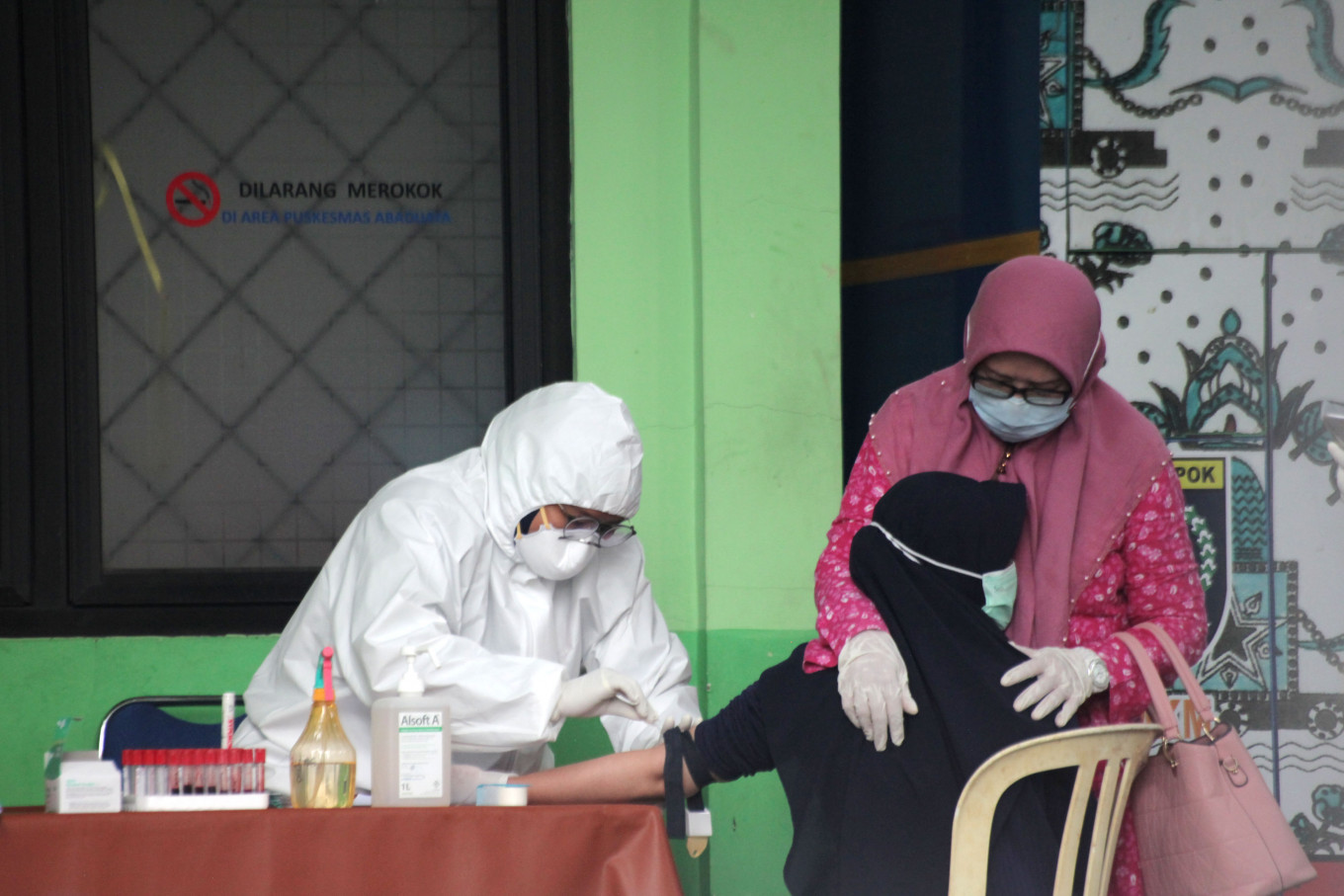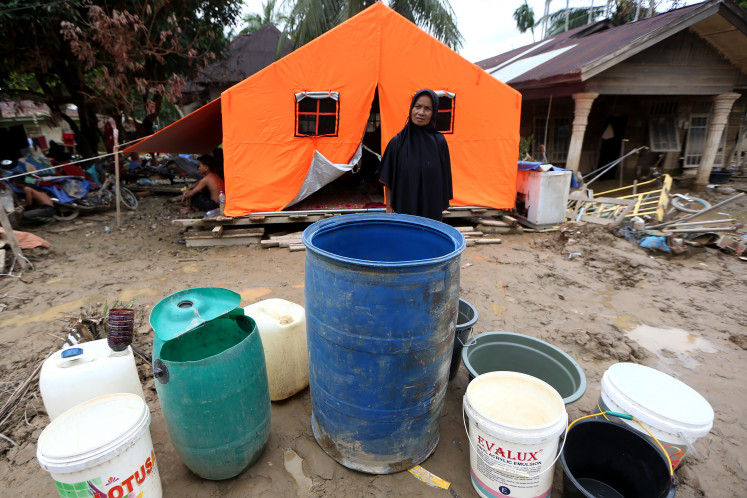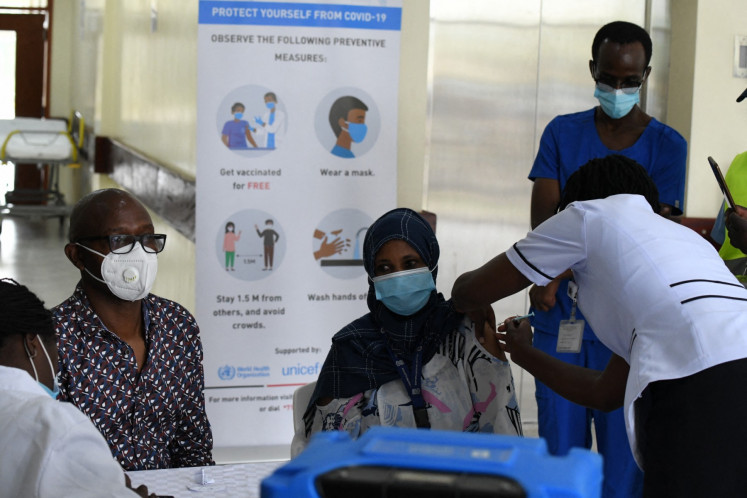Popular Reads
Top Results
Can't find what you're looking for?
View all search resultsPopular Reads
Top Results
Can't find what you're looking for?
View all search resultsCOVID-19: Gender lens needed to fight pandemic
While history has overlooked gender while health outbreaks have put women at a higher risk, applying a gender lens to major decisions and policies related to COVID-19 will finally aid in addressing inequalities in the face of a pandemic.
Change text size
Gift Premium Articles
to Anyone
T
he year 2020 marks an important milestone year for women’s health and gender equality. For instance, following International Women’s Day (IWD) on March 8, in May and July this year meetings in Mexico and Paris were planned to reorient and re-galvanize global commitments in women’s rights and gender equality.
However, the emergence of COVID-19 has sent the world in a completely different trajectory; placing a firm halt on all activities involving mass gatherings of people as an effort to stop the rapid spread of the disease. In Indonesia, the IWD march was strewn with participants donning facemasks, not so much to hide identities from antifeminist groups – a common practice in the past – but more for public health concerns.
Several days after, the World Health Organization (WHO) declared COVID-19 a pandemic, today affecting nearly 500,000 people across almost 200 countries. This is the worst-case scenario in infectious diseases; a state with a disease that people do not have immunity for, is spreading around the world beyond expectations.
In all pandemics -- influenza, tuberculosis, the Spanish flu, and the more recent swine flu and avian flu -- social disparities and inequalities further contribute to unequal burdens of morbidity and mortality.
Crisis situations intensify gender inequality. In China, reports of increasing domestic violence emerged since the lockdown started. It even prompted the hashtag #AntiDomesticViolenceDuringEpidemic, an effort to raise awareness on the spillover effect of the virus.
In Jakarta and its surroundings, work from home instructions are strongly advised by the government. Since women tend to take primary responsibility for child care relative to their male partners, the increased need for child care by parents related to school closures will likely affect women disproportionately, meaning that they, more than their male partners, will stay at home where they would find it difficult to work; especially with young children who need constant attention.
Similarly, given the common gendered roles and expectations in most cultures, older sisters are more likely to be expected to take care of younger siblings rather than older brothers.
Additionally, women are highly impacted by travel restrictions and quarantines—a major cause of concern for migrant workers. In 2018, Indonesia sent 283,640 to work abroad, more than half as migrant domestic workers and two-thirds of them being women. Aside from the psychological impact of being undeterminably apart from families and loved ones, the emergence of a pandemic threatens job security, making them more susceptible to exploitation.
From the health emergency response, photos and videos of healthcare workers in many countries, including Indonesia, show them working heroically around the clock to curtail severe risks of the virus. This alone tells a harrowing story of the role of women as the front-liners in mitigation efforts.
Representing 70 percent of the global health workforce population according to the World Health Organization (WHO), women are unsurprisingly seen especially often in these viral images, as the majority of healthcare workers and caregivers are women according to WHO. Naturally, it is important to address the different physical and sanitary needs between men and women, and the risks these women are facing in their line of work.
Seeing how much gender roles – a socially prescribed set of expectations toward how a person should behave based on their biological sex – affects women during an outbreak of a disease, it is urgent that policies and public health procedures take gender differences into account.
What are the key determinants?
First, reporting mechanisms should be disaggregated by sex, including information related to reproductive factors such as pregnancies. The WHO 2019 World Health Statistics has presented a more comprehensive sex-disaggregated data across different programmatic areas. If kept consistently to a sub-national level, sex disaggregated data will help countries understand the gender dynamics of the disease and develop suitable policies as well as responses in health emergencies.
Second, it is equally important to address gender barriers in health-seeking behavior and access to healthcare services. For instance, women in poor households may be accustomed to spending money on their families rather than their own health, and are reluctant to report symptoms. Women often have less decision-making powers in the family. And if health-screening activities are gender blind, then women would be left out.
What must countries do?
First, addressing gender barriers to achieve better development outcomes can only be done by acknowledging power struggle as an underlying cause. As recommended in the United Nations High Level Panel on the Global Response to Health Crises’ final report in 2017, attention must be focused on the gender dimensions of the global health crises. It stated that “policymakers and outbreak responders need to pay attention to gender-related roles and social and cultural practices”.
Indonesia’s COVID-19 task force must translate this global call to national level policies and actions by providing space for women in all aspects of disease response.
Second, a health emergency setting especially during pandemic like COVID-19 calls for whole of government approach. Government agencies and political leaders must work in alignment to protect the health work force at the front lines and the needs of the population to firmly understand what vulnerable women in Indonesia will soon face. While social distancing measures will protect those at risk from becoming seriously ill, it will inevitably make others more vulnerable, including domestic workers and domestic violence victims.
Third, inclusive and cohesive society is mandatory. A whole of society approach which involves more key players such as women groups, public health organizations and civil societies working in gender issues, need to be included to understand the vulnerabilities of women and girls during complex health emergencies.
Women have played an indispensable role in fighting the pandemic – as healthcare workers, scientists, community mobilizers and as caregivers. While history has overlooked gender while health outbreaks have put women at a higher risk, applying a gender lens to major decisions and policies related to COVID-19 will finally aid in addressing inequalities in the face of a pandemic.
***
Anindita Sitepu is a health psychologist and senior program officer at Rutgers and Diah S. Saminarsih is senior adviser to the World Health Organization’s gender and youth director general ; she was formerly active in Global Health Security Agenda negotiations with the Health Ministry.










